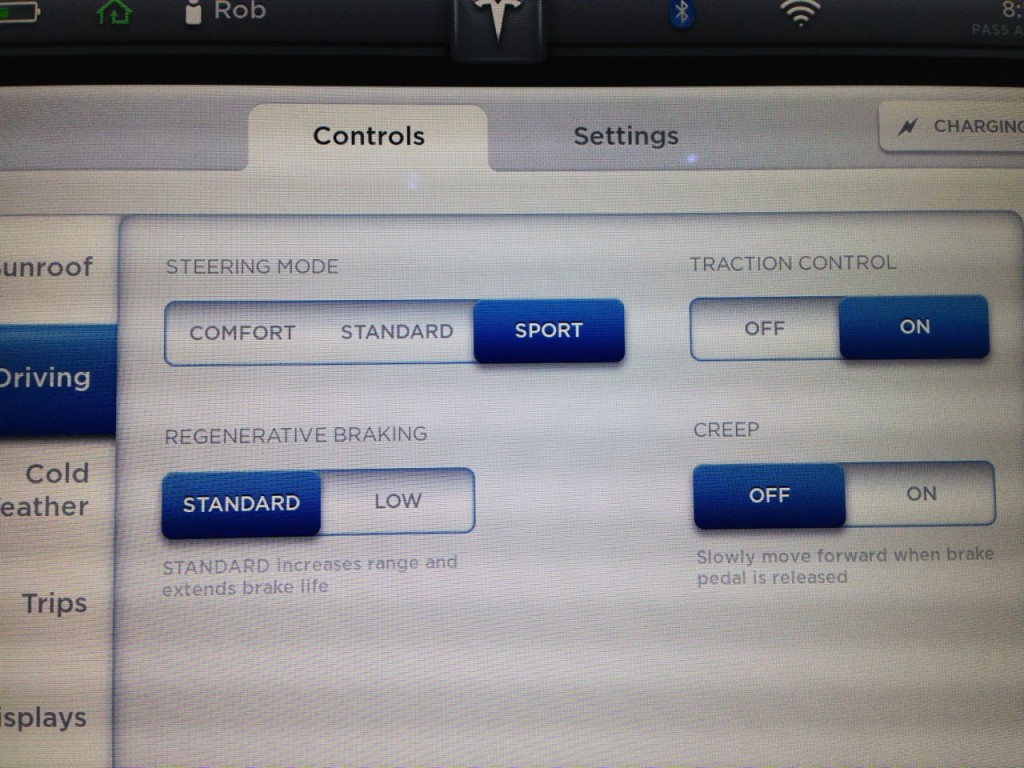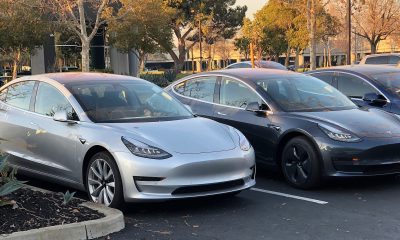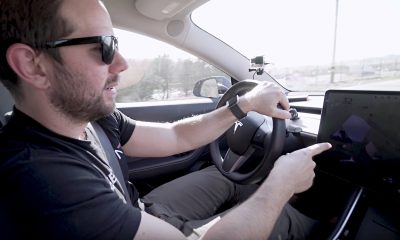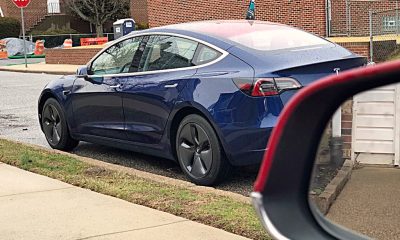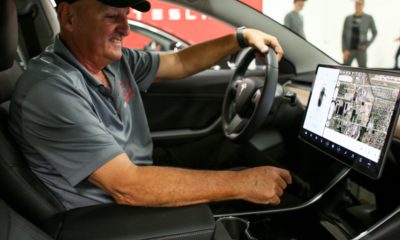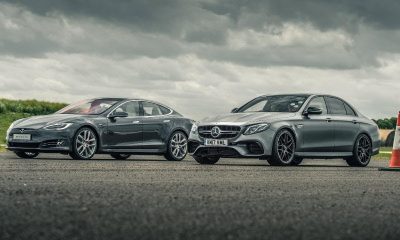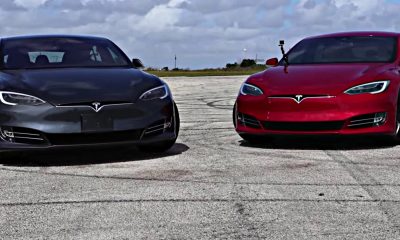Tesla Model S
How does the Tesla Model S Traction Control system work?
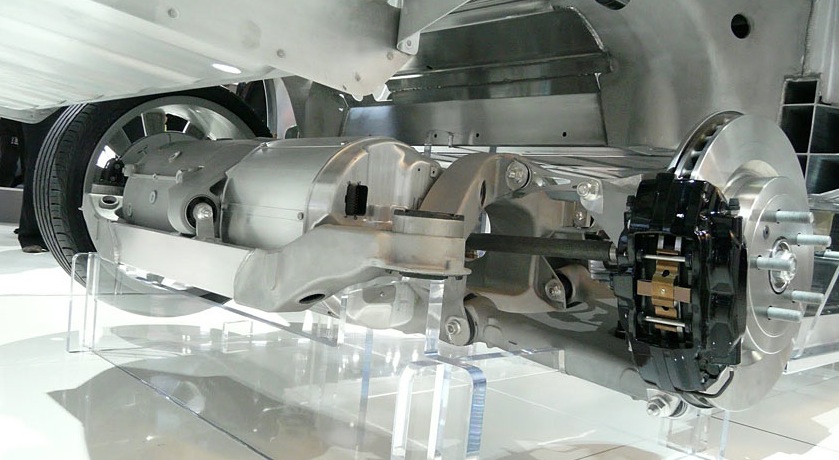
I was pulling out of the parking lot at work the other day and happened to experience some wheel spin as I drove over a patch of sand near a construction site. One wheel spun with limited grip while the other wheel pushed me through the slippery patch. The wheel modulation happened automatically and trouble free which led me to think – How does the Model S traction control work?
Before I dive into it all, one caveat: I’m an electrical/software engineer and not a mechanical engineer. I can change a tire, I used to change my own oil many years ago, but otherwise I let a trusted shop (usually a dealer) do all of the work. The information below is based on my own research and opinions.
Open Differential
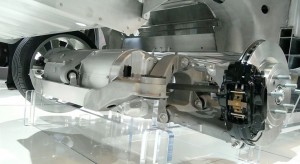 I had a very basic knowledge of how the AC induction motor drives the wheels on my Model S. I thought it was just a direct current motor with a positive and negative terminal that spun one way or the other depending on polarity which in turn spun the wheels. This kind of thinking comes from my days dealing with radio control hobby kits coming out of Radio Shack. I hadn’t thought about how that may translate into driving of two wheels, nor how it would handle situations where traction is limited due to sand and ice.
I had a very basic knowledge of how the AC induction motor drives the wheels on my Model S. I thought it was just a direct current motor with a positive and negative terminal that spun one way or the other depending on polarity which in turn spun the wheels. This kind of thinking comes from my days dealing with radio control hobby kits coming out of Radio Shack. I hadn’t thought about how that may translate into driving of two wheels, nor how it would handle situations where traction is limited due to sand and ice.
It turns out, the shaft of the Model S electric motor inserts into an open differential gear box that then drives the two wheels. This gearing allows the outside drive wheel to rotate faster than the inner drive wheel during turns. Without this gearing either the inside wheel will rotate too fast or the outside wheel will drag. Any imbalance may lead to poor handling, damage to your tires and introduce a lot of stress to the drivetrain. HowStuffWorks has great animated images showing how it operates in action.
Tesla describes the gearing as follows (for the Roadster):
“The motor is directly coupled to a single speed gearbox, above the rear axle. The simplicity of a single gear ratio reduces weight and eliminates the need for complicated shifting and clutch work. The elegant motor does not need a complicated reverse gear – the motor simply spins in the opposite direction.”
The downside of the open differential approach is that torque is evenly applied to both wheels. The traction control system limits the maximum amount of torque that can be applied to each wheel without making it slip.
Turning traction control off essentially allows the motor to not back down even when one of the tires is spinning. This can often result in a lot of tire spinning and will not necessarily remove you from being stuck. In fact you may end up digging a deeper hole than the one you’re already in.
Limited Slip
Traditionally a limited slip differential allows for torque to be applied independently of each wheel. This involves complicated gearing which involves more components, adds additional weight and overall may not be as reliable on a Model S that produces such astronomical torque. For that reason Tesla chose to utilize a much simpler and sturdier open differential. But they needed to solve the slip problem.
Tesla solved the problem on the Model S by selectively applying rear brakes in order to transfer torque to the wheel that grips. These commands are fed into the electronic stability control system which is capable of braking the rear wheels independently as a way to improve the handling of the car under various conditions.
Tesla describes both traction and stability control as follows:
“Model S Traction Control is designed to ensure maximum contact between the road and the tires. Whether you are accelerating off the line, zooming along the winding roads of the Rockies or find yourself in a Gulf Coast rainstorm, Traction Control prevents loss of traction and maintains control. Stability Control reacts in moments of under-steer or over-steer by reducing torque and applying the brakes to individual wheels for enhanced control when cornering.”
Summary
Tesla Motors is about disrupting the norm and re-thinking how things should be done. If you start from scratch and question every design decision, every part, every ounce of weight, every approach and leverage the best minds on the planet, what kind of car will you end up with? The Model S is Tesla’s current answer and certainly not their final answer.
Tesla’s traction control and emulated limited slip functionality is another case of Tesla replacing complex and inefficient hardware with something lighter, simpler and more state of the art – augmenting functionality through software and algorithmic science utilizing today’s advanced computing power.
The next time you slam that “go” pedal and take off like a space ship, think about all the technology that’s helping you launch into the future.
Lifestyle
Tesla Model S Plaid battles China’s 1500 hp monster Nurburgring monster, with surprising results
There is just something about Tesla’s tuning and refinement that makes raw specs seem not as game-changing.

The Tesla Model S Plaid has been around for some time. Today, it is no longer the world’s quickest four-door electric sedan, nor is it the most powerful. As per a recent video from motoring YouTube channel Carwow, however, it seems like the Model S Plaid is still more than a match for some of its newer and more powerful rivals.
The monster from China
The Xiaomi SU7 Ultra is nothing short of a monster. Just like the Model S Plaid, it features three motors. It also has 1,548 hp and 1,770 Nm of torque. It’s All Wheel Drive and weighs a hefty 2,360 kg. The vehicle, which costs just about the equivalent of £55,000, has been recorded setting an insane 7:04.957 at the Nurburgring, surpassing the previous record held by the Porsche Taycan Turbo GT.
For all intents and purposes, the Model S Plaid looked outgunned in Carwow’s test. The Model S Plaid is no slouch with its three motors that produce 1,020 hp and 1,420 Nm of torque. It’s also a bit lighter at 2,190 kg despite its larger size. However, as the Carwow host pointed out, the Model S Plaid holds a 7:25.231 record in the Nurburgring. Compared to the Xiaomi SU7 Ultra’s record, the Model S Plaid’s lap time is notably slower.
Real-world tests
As could be seen in Carwow’s drag races, however, Tesla’s tech wizardry with the Model S Plaid is still hard to beat. The two vehicles competed in nine races, and the older Model S Plaid actually beat its newer, more powerful counterpart from China several times. At one point in the race, the Xiaomi SU7 Ultra hit its power limit due to its battery’s temperature, but the Model S Plaid was still going strong.
The Model S Plaid was first teased five years ago, in September 2020 during Tesla’s Battery Day. Since then, cars like the Lucid Air Sapphire and the Xiaomi SU7 Ultra have been released, surpassing its specs. But just like the Model Y ended up being the better all-rounder compared to the BYD Sealion 7 and the MG IM6, there is just something about Tesla’s tuning and refinement that makes raw specs seem not as game-changing.
Check out Carwow’s Model S Plaid vs Xiaomi SU7 drag race video below.
News
This signature Tesla feature is facing a ban in one of its biggest markets
The report indicates that Chinese government agencies have concerns “about failure rates and safety issues with the flush design.”
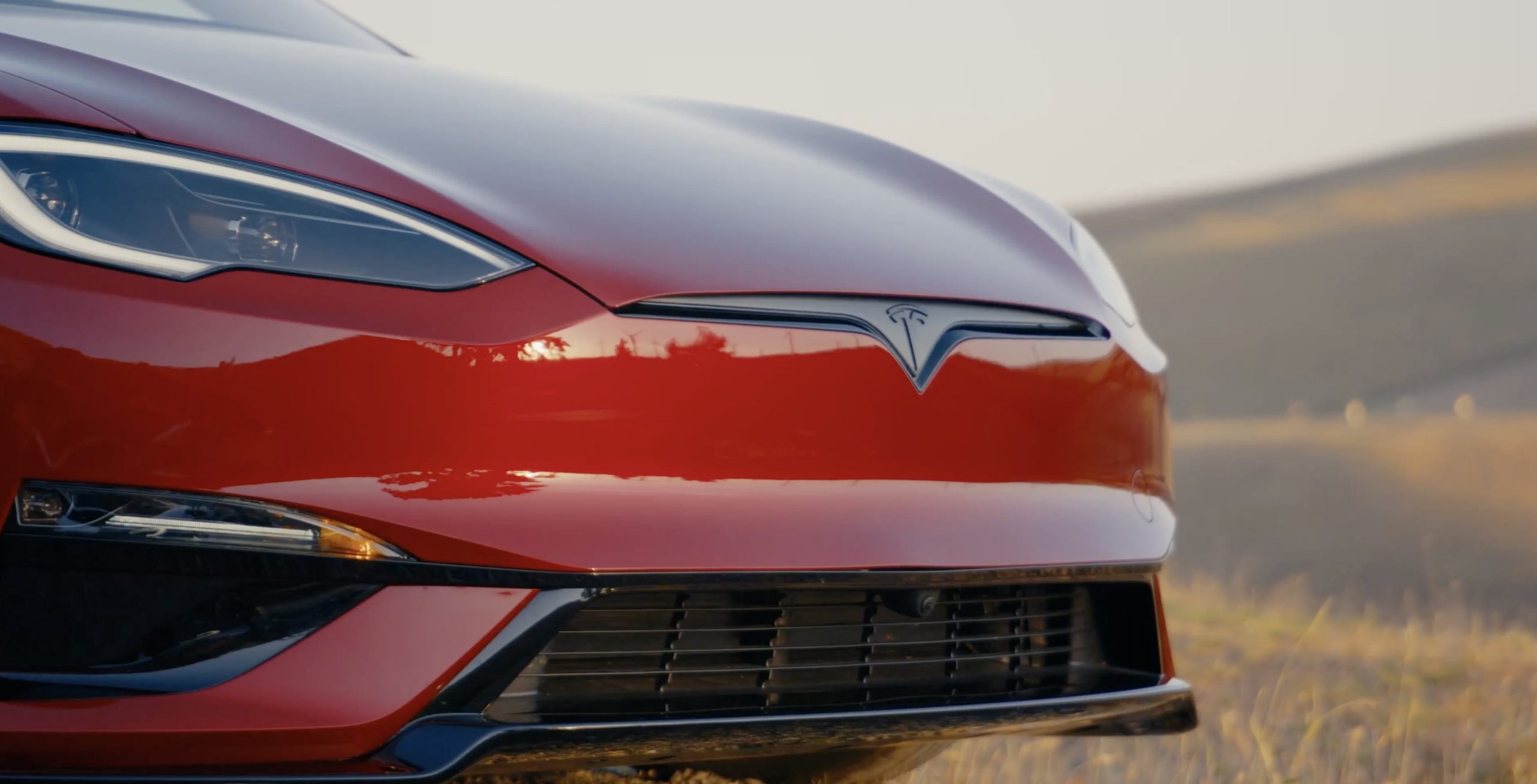
A signature Tesla feature is under fire in one of the company’s largest markets, as regulators in one EV hot spot are mulling the potential ban of a design the automaker implemented on some of its vehicles.
Tesla pioneered the pop-out door handle on its Model S back in 2012, and CEO Elon Musk felt the self-presenting design was a great way to feel like “you’re part of the future.”
It is something that is still present on current Model S designs, while other vehicles in the Tesla lineup have a variety of handle aesthetics.
According to Chinese media outlet Mingjing Pro, the company, along with others using similar technology, is facing scrutiny on the design as regulators consider a ban on the mechanism. These restrictions would impact other companies that have utilized pop-out handles on their own designs; Tesla would not be the only company forced to make changes.
The report indicates that Chinese government agencies have concerns “about failure rates and safety issues with the flush design.”
However, EVs are designed to be as aerodynamically efficient as possible, which is the main reason for this design. It is also the reason that many EVs utilize wheel covers, and sleek and flowing shapes.
However, the Chinese government is not convinced, as they stated the aerodynamic improvements are “minimal,” and safety issues are “significantly elevated,” according to The Independent.
The issue also seems to be focused on how effective the handle design is. According to data, one EV manufacturer, which was not specified in the report, has 12 percent of its total repairs are door handle failure fixes.
There are also concerns about the handles short-circuiting, leaving passengers trapped within cars. Tesla has implemented emergency latch releases in its vehicles that would prevent passengers from getting stuck in their cars in cases of electric malfunctions or failures.
However, evidence from the Chinese Insurance Automotive Technology Research Institute (C-IASI) suggests that 33 percent of door handles using this design fail to function after a side impact.
Obviously, Tesla and other automakers could introduce an alternative design to those vehicles that are affected by the potential restrictions China intends to impose. The regulation would take effect in July 2027.
News
Tesla pushes crazy ‘Luxe’ incentive package on flagship Model S and X
Tesla is pushing more customers to the Model S and Model X with a new incentive package.
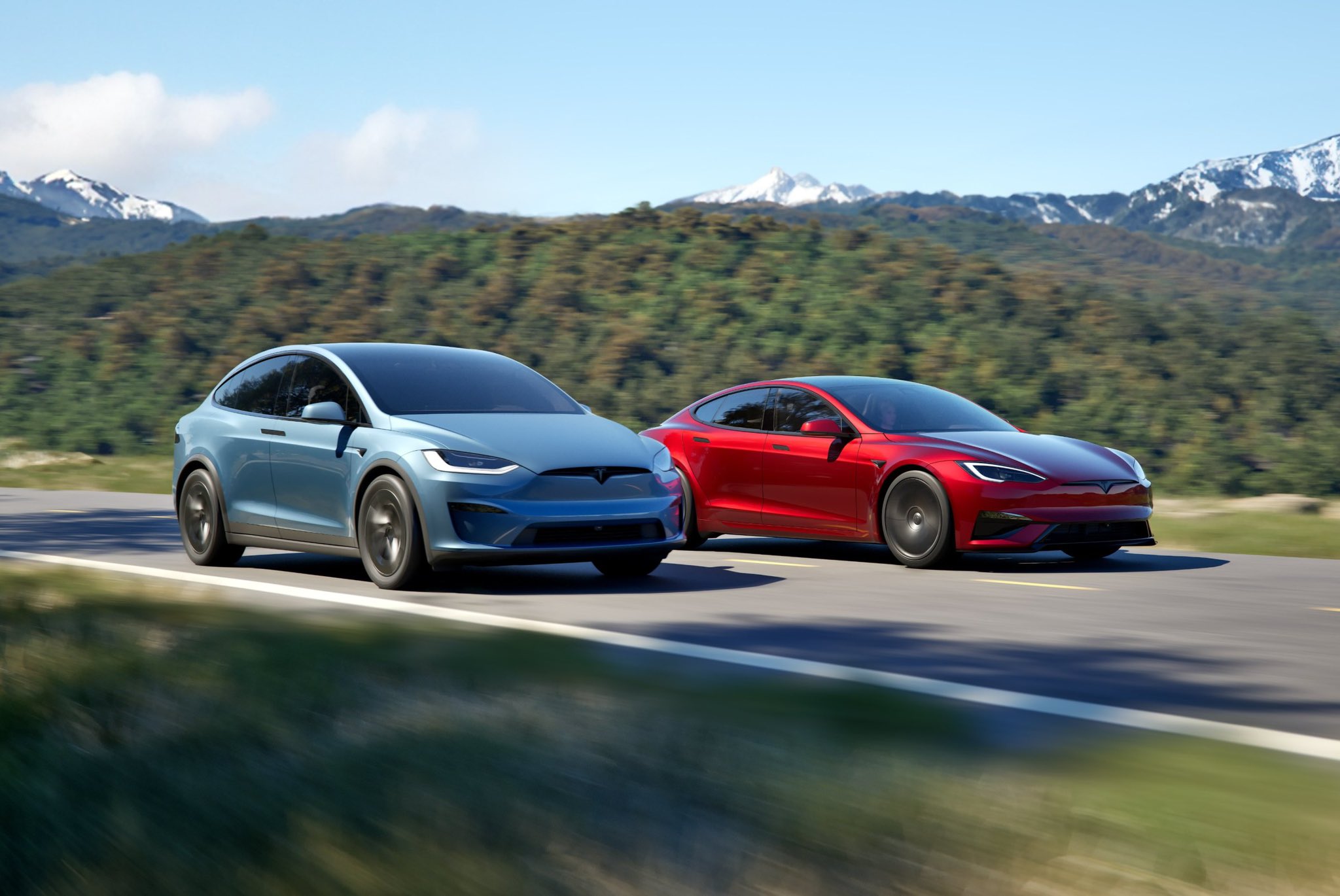
Tesla has pushed a crazy new incentive package, known as the “Luxe Package,” on the flagship Model S and Model X, along with a $10,000 price increase on each trim level.
The move aims to likely bolster margins for the company on the two cars while also giving those who choose to buy the Tesla lineup mainstays a variety of awesome advantages, including Free Supercharging, Full Self-Driving, and other add-ons.
Tesla is offering a crazy Supercharging incentive on its two ‘sentimental’ vehicles
Last night, Tesla launched the “Luxe Package” for the Model S and Model X, which includes the following four add-ons:
- Full Self-Driving (Supervised) – Your car will be able to drive itself almost anywhere with minimal driver intervention
- Four-Year Premium Service – Wheel and Tire Protection, Windshield Protection, and Recommended Maintenance
- Supercharging – Charge for free at 70,000+ Superchargers worldwide
- Premium Connectivity – Listen to music, stream movies, monitor live traffic, and more – no Wi-Fi needed
Full Self-Driving is priced at $8,000. Free Supercharging for the life of the car is between $10,000 and $15,000 over the life of the vehicle, although Tesla has valued it at $5,000 in recent promotions.
Free Premium Connectivity is roughly $1,000, and the four-year tire, wheel, windshield, and maintenance plan is about $3,200.
🚨 Tesla increased the price of both the Model S and Model X by $10,000, but both vehicles now include the “Luxe Package,” which includes:
-Full Self-Driving
-Four years of included maintenance, tire and wheel repairs, and windshield repairs/replacements
-Free lifetime… pic.twitter.com/LKv7rXruml— TESLARATI (@Teslarati) August 16, 2025
In all, the value is over $25,000, but this is loosely based on usage.
The Model S and Model X are low contributors to Tesla’s overall sales figures, as they make up less than five percent of sales from a quarterly perspective and have for some time.
As they are certainly the luxury choices in Tesla’s lineup, the Model 3 and Model Y are the bigger focus for the company, as a significantly larger portion of the company’s sales is made up of those vehicles.
The Luxe Package is an especially good idea for those who drive high-mileage and plan to use the Model S or Model X for commuting or long drives. The free Supercharging makes the deal worth it on its own.
As for the price bumps, each of the vehicles are now priced as follows:
- Model S All-Wheel-Drive: $94,990
- Model S Plaid: $109,990
- Model X All-Wheel-Drive: $99,990
- Model X Plaid: $114,990
-
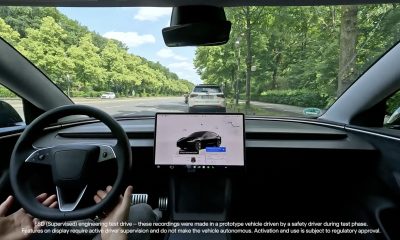
 Elon Musk2 weeks ago
Elon Musk2 weeks agoTesla FSD V14 set for early wide release next week: Elon Musk
-
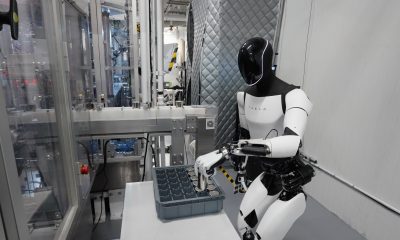
 News1 week ago
News1 week agoElon Musk gives update on Tesla Optimus progress
-
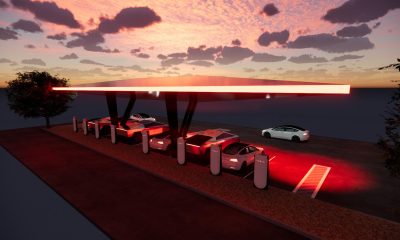
 News2 weeks ago
News2 weeks agoTesla has a new first with its Supercharger network
-
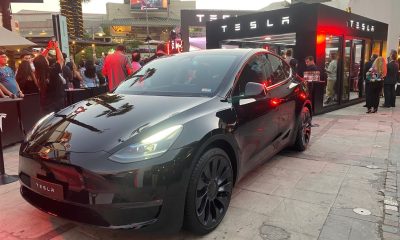
 News2 weeks ago
News2 weeks agoTesla job postings seem to show next surprise market entry
-
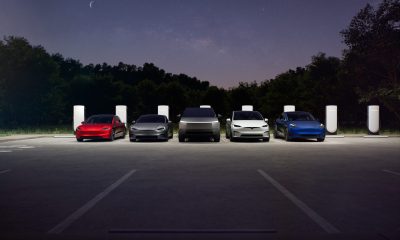
 News2 weeks ago
News2 weeks agoTesla makes a big change to reflect new IRS EV tax credit rules
-
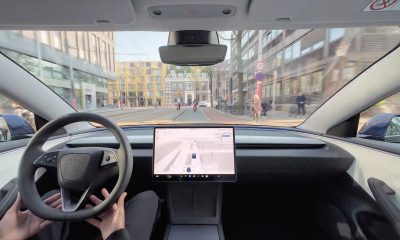
 Investor's Corner1 week ago
Investor's Corner1 week agoTesla gets new Street-high price target with high hopes for autonomy domination
-
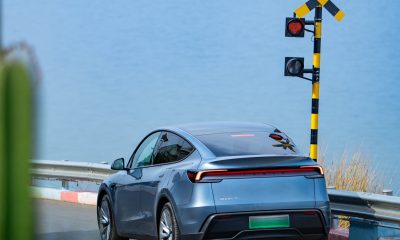
 Lifestyle1 week ago
Lifestyle1 week ago500-mile test proves why Tesla Model Y still humiliates rivals in Europe
-
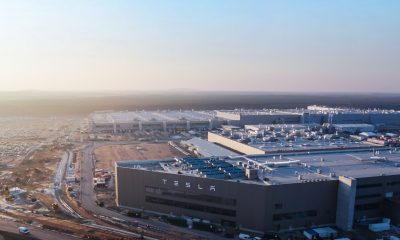
 News1 week ago
News1 week agoTesla Giga Berlin’s water consumption has achieved the unthinkable

